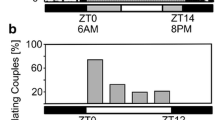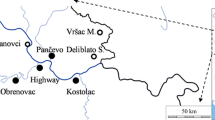Abstract
Fluctuating asymmetry (FA) may be a sensitive indicator of the stress experienced by organisms during their development. Its use in this manner is an intuitively appealing, frequently proposed, and potentially powerful tool but remains controversial partially because its underlying premise rarely has been critically tested. Such tests should include direct comparisons among individuals for which levels of FA, stress and fitness have been unambiguously quantified. We assessed the use of FA as a bioindicator of the stress experienced during egg-to-adult development by the stem-mining sawfly, Cephus cinctus Norton. Sawflies were reared in a common garden from seven different wheat cultivars, which were selected to represent a gradient of stem solidness, a key factor imposing stress on sawflies during development. In this model system, stress was quantified by the weight of emergent adults. Fitness was quantified by counting the number of eggs in dissected females, which emerge with their full lifetime complement. FA was measured for wing length, three wing cells, and three wing veins using image analyses. The greatest amount of stress was induced by solid-stemmed cultivars from which the adults were significantly smaller than those developing in hollow-stemmed hosts. In turn, adult weight was positively correlated with fitness. The net effect was a 25-fold variation in sawfly fitness, which gave a reasonable expectation that FA levels would differ across cultivars. However, FA levels of all the traits were similar among cultivars and there was no negative relationship between FA and fitness. These results: (1) document the failure of FA as an indicator of stress in this model system, (2) identify adult weight as a satisfactory indicator of plant-induced stress and sawfly fitness, and (3) add to the growing body of literature questioning the value of FA as a biomonitor tool of developmental stress.





Similar content being viewed by others
References
Bennett DM, Hoffman AA (1998) Effects of size and fluctuating asymmetry on field fitness of the parasitoid Trichogramma carverae (Hymenoptera: Trichogrammatidae). J Anim Ecol 67:580–591
Beres B, Cárcamo H (2006) Does wheat host affect overwintering survivorship of the wheat stem sawfly? In: Proceedings of 54th Annual Meeting Entomological Society of Alberta, Lethbridge, 26–28 October 2006, p 7
Beres BL, Byers JR, Cárcamo HA (2005) Wheat stem sawfly: a nursery tale from the shortgrass prairies. Arthropods of Canadian grasslands, p 6. http://www.biology.ualberta.ca/bsc/grasslandarticles/wheatstemsawfly.pdf
Bjorksten TA, Fowler K, Pomiankowski A (2000) What does sexual trait FA tell us about stress? Trends Ecol Evol 15:163–166
Breuker CJ, Brakefield PM (2003) Lack of response to selection for lower fluctuating asymmetry of mutant eyespots in the butterfly Bicyclus anynana. Heredity Int J Genet 91:17–27
Cárcamo HA, Beres BL, Clarke F et al (2005) Influence of plant host quality on fitness and sex ratio of the wheat stem sawfly (Hymenoptera: Cephidae). Environ Entomol 34:1579–1592
Clarke GM (1995) Relationship between developmental stability and fitness: applications for conservation biology. Conserv Biol 9:18–24
Clarke GM (1998) Developmental stability and fitness: the evidence is not quite so clear. Am Nat 1652:732–766
Clarke FR, DePauw RM, Aung T (2005) Registration of sawfly resistant hexaploid spring wheat germplasm lines derived from durum. Crop Sci 45:1665–1666
Conover WJ, Iman RL (1981) Rank transformations as a bridge between parametric and nonparametric statistics. Am Stat 35:124–129
Criddle (1922) The western wheat stem sawfly and its control. Dominion of Canada Department of Agriculture Pamphlet No. 6, New Series, pp 1–8
Da Silva JJ, Mendes J, Lomônaco C (2004) Developmental stress by Diflubenzuron in Haematobia irritans L. (Diptera: Muscidae). Neotropical Entomol 33:249–253
DePauw RM, McLeod JG, Clarke JM et al (1994) AC Eatonia hard red spring wheat. Can J Plant Sci 74:821–823
DePauw RM, Thomas JB, Knox RE et al (1998) AC Cadillac hard red spring wheat. Can J Plant Sci 78:459–462
DePauw RM, Clarke JM, Knox RE et al (2000) AC Abbey hard red spring wheat. Can J Plant Sci 80:123–127
Farstad CW (1940) The development of western wheat stem sawfly (Cephus cinctus Nort.) in various host plants as an index of resistance. Iowa State College J Sci 15:67–69
Floate KD, Fox AS (2000) Flies under stress: a test of fluctuating asymmetry as a biomonitor of environmental quality. Ecol Appl 10:1541–1550
Graf RJ, Hucl P, Orchinsky BR et al (2003) McKenzie hard red spring wheat. Can J Plant Sci 83:565–569
Holmes ND (1979) The wheat stem sawfly. Proc Ent Soc Alberta 26: 2–13
Holmes ND (1982) Population dynamics of the wheat stem sawfly, Cephus cinctus (Hymenoptera: Cephidae), in wheat. Can Entomol 114:775–788
Houle D (1998) High enthusiasm and low R-squared. Evolution 53(6):1872–1876
Kanegae AP, Lomônaco C (2003) Plasticidade morfológica, reprodutiva e assimetria flutuante de Myzus persicae (Sulzer) (Hemiptera: Aphididae) sob diferentes temperaturas. Neotropical Entomol 32:37–43
Kokko EG, Floate KD, Colwell DD et al (1996) Measurement of fluctuating asymmetry in insect wings using image analysis. Ann Entomol Soc Am 89:398–404
Leung B, Forbes MR (1997) Fluctuating asymmetry in relation to indices of quality and fitness in the damselfly, Enallagma ebrium (Hagen). Oecologia 110:472–477
Lomônaco C, Germanos E (2001) Variações fenotípicas em Musca domestica L. (Diptera: Muscidae) em resposta a competição larval por alimento. Neotropical Entomol 30:223–231
Møller AP (1997) Developmental stability and fitness: a review. Am Nat 149:916–932
Møller AP (1999) Developmental stability is related to fitness. Am Nat 153:556–560
Morrill WL, Weaver DK (2000) Host plant quality and male wheat stem sawfly (Hymenoptera: Cephidae). J Entomol Sci 35(4):478–482
Morrill WL, Gabor JW, Weaver DK et al (2000) Effect of host quality on the sex ratio and fitness of female wheat stem sawflies (Hymenoptera: Cephidae). Environ Entomol 29:195–199
Naugler CT, Leech SM (1994) Fluctuating asymmetry and survival ability in the forest tent caterpillar moth Malacosoma disstria: implications for pest management. Entomol Exp Appl 70:295–298
Nosil P, Reimchen TE (2001) Tarsal asymmetry, nutritional condition, and survival in water boatmen (Callicorixa vulnerata). Evolution 55:712–720
Palmer AR (1999) Detecting publication bias in meta-analyses: A case study of fluctuating asymmetry and sexual selection. Am Nat 154:220–233
Palmer AR, Strobeck C (1986) Fluctuating asymmetry: measurement, analysis, patterns. Ann Rev Ecol Sys 17:391–421
Palmer AR, Strobeck C (2003) Fluctuating asymmetry analyses revisited. In: Polack M (ed) Developmental instability: causes and consequences. Oxford University Press, Oxford, pp 279–319
Platt AW (1941) The influence of some environmental factors on the expression of the solid stem character in certain wheat varieties. Sci Agric 23:139–151
Simmons LW, Tomkins JL, Kotiaho JS et al (1999) Fluctuating paradigm. Proc R Soc Lond [Biol] 266:593–595
Stige LC, Hessen DO, Vollestad LA (2006) Fitness, developmental stability, and the ontogeny of fluctuating asymmetry in Daphnia magna. Biol J Linnean Soc 88:179–192
Thornhill R, Møller AP, Gangestad SW (1999) The biological significance of fluctuating asymmetry and sexual selection: a reply to Palmer. Am Nat 154:234–240
Ueno H (1994) Fluctuating asymmetry in relation to two fitness components, adult longevity and male mating success in a ladybird beetle, Harmonia axyridis (Coleoptera: Coccinellidae). Ecol Entomol 19:87–88
Wall A (1952) The diameter of the wheat stem in relation to the length and sex of emerging sawfly (Cephus cinctus Nort.). Sci Agric 32:272–277
Wilkinson L (2002) Systat Software Inc. Version 10.2. Systat Software Inc, Richmond
Acknowledgments
We thank B. Lounds and C. Klima for technical assistance. This study was funded mainly through Agriculture and Agri-Food Canada’s (AAFC) A-base and partly through the Matching Investment Initiative program, matched to external funds received by B. Beres from the Western Grains Research Foundation for cereal germplasm evaluation. The experiments performed comply with the current laws of Canada.
Author information
Authors and Affiliations
Corresponding author
Additional information
Communicated by Jay Rosenheim.
Rights and permissions
About this article
Cite this article
Cárcamo, H.A., Floate, K.D., Lee, B.L. et al. Developmental instability in a stem-mining sawfly: can fluctuating asymmetry detect plant host stress in a model system?. Oecologia 156, 505–513 (2008). https://doi.org/10.1007/s00442-008-1009-y
Received:
Accepted:
Published:
Issue Date:
DOI: https://doi.org/10.1007/s00442-008-1009-y




